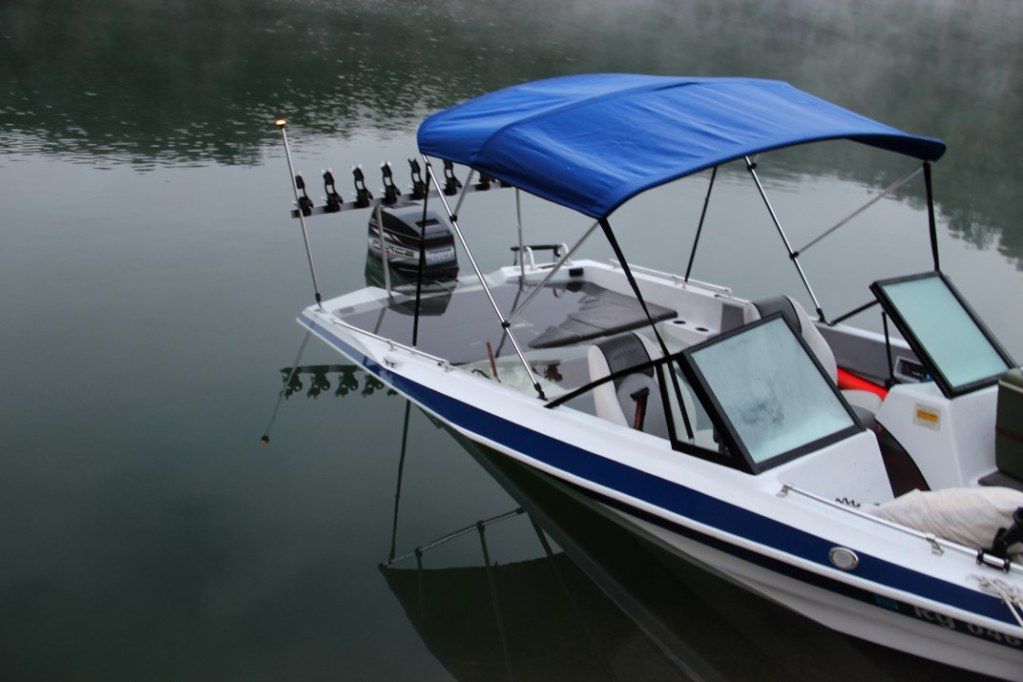vinnie1234
Petty Officer 2nd Class
- Joined
- Jul 7, 2014
- Messages
- 161
Hello all. I'm not sure if this is the right place to post, but if anyone has experience in assessing the condition of the hull with a test run, perhaps you can answer my question.
I have a 1978 crestliner crusader bowrider. Fiberglass hull. I know there is a bit of rot in the floor as there is a soft spot in the floor, just past the helm on the way up to the bow.
Last night I had the boat out for the first time in a bit of chop. Wave height was around 2 to 2.5 feet with a very short interval. Some white caps. I was cruising around 35 km/hr. It's about as fast as I could go without really slamming the hull, but still there was the odd big one here and there and we were bouncing around a bit. I have read posts about bad stringers and been told that you can feel the bow flexing around when the stringers are rotting.
I have never owned a boat so I don't know what is normal but I will tell you what I observed and perhaps someone can tell me if this is normal.
When the boat was bouncing off the waves, I would feel the impact in my feet quite solid. I was paying attention to the attitude of the bow and it for sure did not twist in relation to the stern, but there may have been a little bit of up/down flex. Nothing really noticeable, so little that I am unsure that there even was any flex. It's hard to say when you are flopping around.
I was hitting the waves at about a 30 degree angle, doing some pretty hard turns. Actually in one turn when the waves were coming directly from starboard, the boat actually rolled off the top of a wave and fishtailed and went sideways a bit and it seemed solid.
The only view I have had of the stringers is by looking in the engine compartment where the motor mounts attaché to the stringer. It seems intact and solid.
So I guess my real question is: aside from pulling out the floor to have a look, is there a way to tell if the stringers are decent by driving the boat? If they were bad, would that be pretty obvious? I wonder if this is something I should worry about.
I also notice that when I pull the boat out of the water the hull seems pretty rigid. there is no bow flex when pulling it up with the winch, and there are no apparent stress cracks in the hull. This winter I plan to remove the carpet and replace the bad sections of floor. I then want to glass it over, remove the lounge seats and make the boat a little better for fishing. I expect that if there is an issue with the stringers I will be able to tell once I lift the floor and have a peek.
What should I be looking for?
I have a 1978 crestliner crusader bowrider. Fiberglass hull. I know there is a bit of rot in the floor as there is a soft spot in the floor, just past the helm on the way up to the bow.
Last night I had the boat out for the first time in a bit of chop. Wave height was around 2 to 2.5 feet with a very short interval. Some white caps. I was cruising around 35 km/hr. It's about as fast as I could go without really slamming the hull, but still there was the odd big one here and there and we were bouncing around a bit. I have read posts about bad stringers and been told that you can feel the bow flexing around when the stringers are rotting.
I have never owned a boat so I don't know what is normal but I will tell you what I observed and perhaps someone can tell me if this is normal.
When the boat was bouncing off the waves, I would feel the impact in my feet quite solid. I was paying attention to the attitude of the bow and it for sure did not twist in relation to the stern, but there may have been a little bit of up/down flex. Nothing really noticeable, so little that I am unsure that there even was any flex. It's hard to say when you are flopping around.
I was hitting the waves at about a 30 degree angle, doing some pretty hard turns. Actually in one turn when the waves were coming directly from starboard, the boat actually rolled off the top of a wave and fishtailed and went sideways a bit and it seemed solid.
The only view I have had of the stringers is by looking in the engine compartment where the motor mounts attaché to the stringer. It seems intact and solid.
So I guess my real question is: aside from pulling out the floor to have a look, is there a way to tell if the stringers are decent by driving the boat? If they were bad, would that be pretty obvious? I wonder if this is something I should worry about.
I also notice that when I pull the boat out of the water the hull seems pretty rigid. there is no bow flex when pulling it up with the winch, and there are no apparent stress cracks in the hull. This winter I plan to remove the carpet and replace the bad sections of floor. I then want to glass it over, remove the lounge seats and make the boat a little better for fishing. I expect that if there is an issue with the stringers I will be able to tell once I lift the floor and have a peek.
What should I be looking for?





















